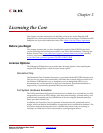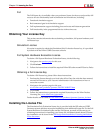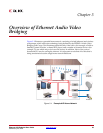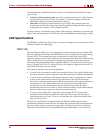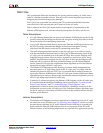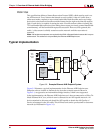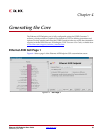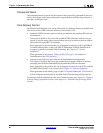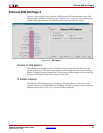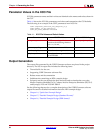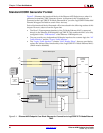
Ethernet AVB Endpoint User Guide www.xilinx.com 33
UG492 July 23, 2010
Typical Implementation
Figure 3-2 illustrates that the Ethernet AVB Endpoint core supports the two main types of
data interfaces at the client side:
1. The AV traffic interface is intended for the Quality of Service audio/video data.
Illustrated are a number of audio/video sources (for example, a DVD player), and a
number of audio/video sinks (for example, a TV set). The Ethernet AVB Endpoint
gives priority to the AV traffic interface over the legacy traffic interface, as dictated by
IEEE P802.1Qav 75% bandwidth restrictions.
2. The legacy traffic interface is maintained for best effort ethernet data: Ethernet as we
know it today (for example, the PC surfing the internet in Figure 3-1). Wherever
possible, priority is given to the AV traffic interface (as dictated by IEEE P802.1Qav
bandwidth restrictions) but a minimum of 25% of the total Ethernet bandwidth is
always available for legacy ethernet applications.
The AV traffic interface in Figure 3-2 is shown as interfacing to a 1722 Packet Manager
block. The IEEE1722 is also an evolving standard which will specify the embedding of
audio/video data streams into Ethernet Packets. The 1722 headers within these packets
can optionally include presentation time stamp information. Contact Xilinx for further
system-level information.





